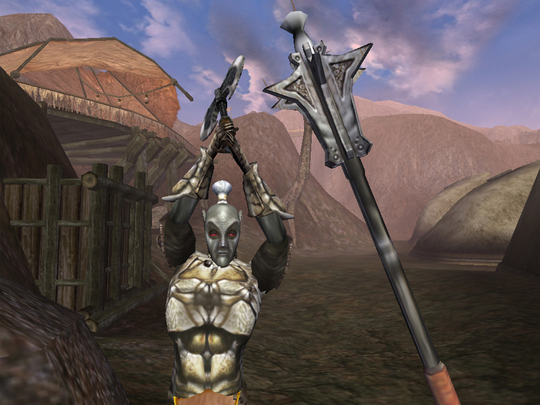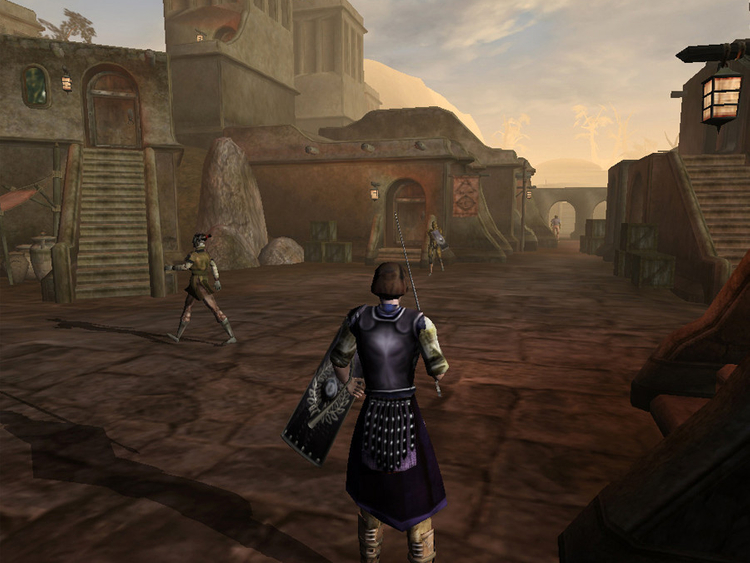
Many hearts probably skipped some beats when the words “press release”, “new” and “Morrowind” popped up in email inboxes a few weeks ago.
Fans have been hoping for an HD re-release of The Elder Scrolls III: Morrowind for a long time, all the while knowing that it’s very unlikely to happen.
And, indeed, the email was not about any such remake or remaster, but about a new upcoming expansion for The Elder Scrolls Online (TSO), ZeniMax’s massively multiplayer online (MMO) take on the franchise.
TSO was one of those answers to a question nobody ever asked. The Elder Scrolls games had been, since the release of the first game in the series in 1994, decidedly single-player affairs.
Even more so than many other role-playing games (RPGs) that also cast you in the role of some kind of chosen one destined to save the world, they were all about a very individual journey of discovery, both of the landscape and your character’s development and his or her place within the unfolding narrative.
The idea of thousands of “chosen ones” all running around the same world just seems wrong, and this is one of the reasons many diehard Elder Scrolls fans never really got into TSO.
Will this change with the release of the new expansion? The chance to return to the shores of Vvardenfell might just be too much to resist even for those who have vowed to never touch an Elder Scrolls-branded MMO.
But why? What made this 2002 PC and Xbox release so special?
There are many reasons, but one of the biggest is that while the game world in Morrowind is stranger than that of its sequels, and while it has terrible graphics compared to them, it paradoxically somehow just feels more “real” than the worlds presented in Oblivion and Skyrim.
Many features that are standard in most games today are noticeably missing from Morrowind; there are no quest markers, very little voice acting, and fast travel is only possible between a handful of locations.
If you’re going to play Morrowind for the first time after having played the sequels, it might seem extremely clunky and decidedly non-user friendly.
But give it some time, and you’ll discover why less sometimes really does mean more.
The lack of an on-screen arrow always showing you what direction to go in means that you have to navigate the old-fashioned way: using directions, maps, signposts and landmarks to find people and places. Combined with the limited fast-travel options, this results in a much more organic way of exploring the world. A journey to a far-off location can take quite a long time, and you’ll stumble upon plenty of interesting places along the way. It feels more real, more immersive, and less like a “game”, than does the instant-gratification, hand-holding approach that has become the norm in newer games.
Being forced to do a lot more reading instead of just listening to other characters deliver their lines also encourages more engagement with the lore of this strange world.
There are many mods out there for Morrowind, but if you’re going to be playing it for the first time, I’d suggest making use only of ones that update the graphics to something a little more palatable to modern sensibilities.
The levelling and combat systems are very different from the sequels’, even where they might look superficially similar. And while again some of this may seem antiquated in comparison, you should resist the urge to try mods that “update” the gameplay. Morrowind puts a lot more emphasis on the RPG part of “action-RPG” in terms of its combat mechanics, opting for the classic dice-roll approach from the world of tabletop RPGs (even if they’re invisible dice, in this case…). This can be very hard to get used to, and the combat was criticised by some even at the time of the game’s release. But once again, what may seem like an unnecessarily-complicated or difficult approach yields unexpected gameplay treasures.
This retrospective is, then, a call to anyone who has not yet experienced the joys of Morrowind, and who doesn’t mind doing a bit of fiddling to get it to run well in 2017, to give it a try.
It will demand a lot more of you than its modern-day counterparts, but the rewards are more than worth the effort.
The Elder Scrolls 3: Morrowind is available on Steam and GOG.com










